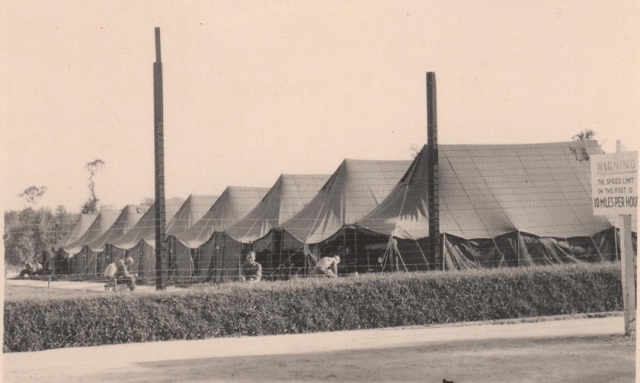This is interesting. Check it out, readers!

The Compassionate Prison Camp
By Jeff Stoffer
Feb 20, 2018
A remarkable monument to the Allied invasion of Normandy and the march to victory in the European campaign of World War II can be found alongside a narrow road tracing the perimeter of a grain field a few miles inland from Utah Beach, near the tiny village of Foucarville.
For 21 months following D-Day, well beyond the war’s end, more than 100,000 Nazi POWs spent at least some time detained here, under U.S. Army supervision, in a compassionate compound that stood in stark contrast to the horrific death camps of Holocaust Germany.
Continental Prisoner of War Enclosure No. 19 at Foucarville was a 306-acre, kit-built complex that included hydroelectric power, self-contained diesel generators, two hospitals, seven kilometers of railroad track and six locomotives to transport food and goods, including 18 tons of bread baked there daily. It had 50 kitchens, five mess halls, 10 workshops, four churches, a soccer field and two theaters. The camp was connected with 19 miles of high-voltage lines before many of the French villages had electricity at all after the invasion.
The prisoners, mainly German officers and teenagers, lived “under the symbol of liberty,” says Anne Broilliard, a local historian and co-author with Benoit Lenoel of the 2017 book “Prisonniers Allemands en Normandie,” available only in French, which revives the fading history of the U.S.-run enclosure, whose school sign read: “C.C.P.W.E. No. 19 University – Dedicated to the Re-Education of German Youth.” Foucarville was one of four such camps, and the largest, in France during World War II.


Loved that story. I might look for the book.
There was a prisoner of war camp in Algona, Iowa, for captured Germans. It opened before D-Day and housed a few thousand prisoners at a time. I used an invented character escaping from it, in Jessamyn’s Yarn.
LikeLiked by 1 person
Reminds me of the summer camp I attended in Pennsylvania as a lad of 11. It was built as a POW camp for German soldiers in a beautiful setting in the mountains near Carlisle. There were some drawings and paintings that residents had done on walls that were preserved under glass.
Recall that when I was there, at Camp Michaux, WW2 had only ended 20 years ago, and we were becoming more deeply involved in Vietnam by the day. Different world.
LikeLiked by 1 person